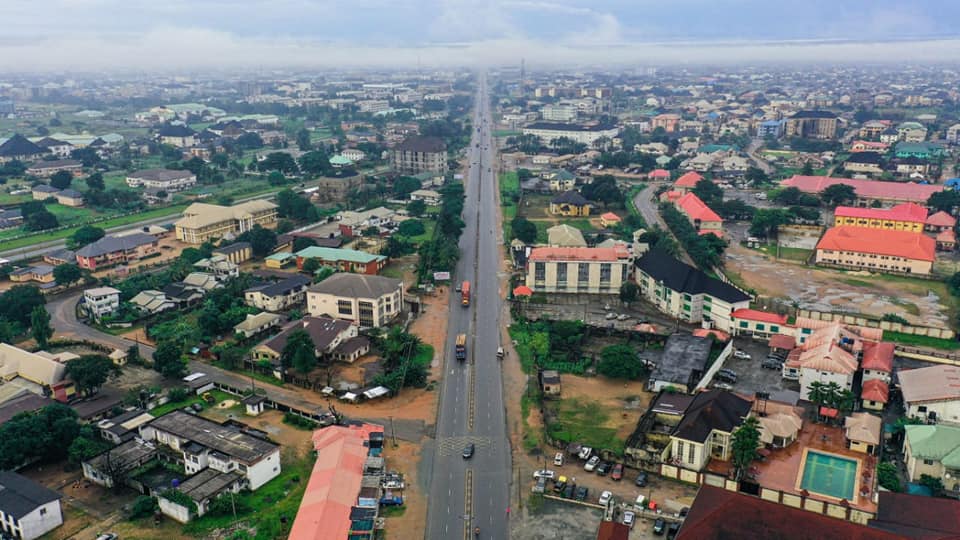Nigeria’s security landscape has for decades welcomed rather complex web of insurgencies, banditry, and separatist agitations. From vast arid wastes of the Northeast/Northwest to the dense forests of Southeast/Southwest and the creeks of the Niger Delta, the nation quakes deep from persistent, lately worsening, devastations of non-state actors who exploit geography, the country’s perennially porous borders, national political differences, local grievances, and vast limitations of conventional military combat precepts.
Despite years of counter-insurgency campaigns, amid staggering state commitments, the violence has exacerbated, frequently manifesting in killings and abductions of hapless/defenseless civilians, as much by unwelcome guests as by deranged nationals, who speak in tongues, both familiar and strange, and who have recently morphed into queer, implacable forms and spread into previously unaffected regions. Are they closing in on the capitals? At the heart of this challenge lies a fundamental mismatch between the nature of the threats and the structure of Nigeria’s security response.
Traditional military doctrines, designed for state-on-state warfare, have proven ill-suited for adversaries who operate in the shadows, strike unpredictably, and vanish into limitless wastes of ungoverned countrysides.
The rigidity of conventional military formations, with their centralised command structures and static deployments, has left critical gaps that insurgents have repeatedly exploited, leaving hundreds of civilian populations at the mercy of those whose mission is an admixture of mass killings, mass rapes, and ransom taking!
Nigeria’s insurgency has endured as insurgents have continuously basically exploited geography as much as ideology. Vast unexplored forests – such as Sambisa and other rural belts – have become operational reserves for militants to regroup after each blitzkrieg, train recruits, and launch further attacks. These terrains, difficult to patrol and largely outside state control, provide natural cover and psychological advantage.
To dismantle this infrastructure of concealment, Nigeria must rework the doctrine of military asymmetry that combines aerial bombardment, precision strikes, and ground clearance operations. Forested hideouts cannot continue to remain untouched; they must be exposed through coordinated massive campaigns that deny its dangerous occupants the ability to melt back into nature after each assault.
Factually, a new paradigm – one that embraces advanced asymmetric methodology, which promotes covert procedure, extreme intelligence gathering, tactical agility, and well-decentralised operational model – recognises foundational mercurial fluidity of the threats it seeks to neutralise, far beyond just superior firepower.
Central to this proposition is bold re-invention of Nigeria’s military geography and conventional combat methodology that would see the country re-organised into whole network of at least 18 strategically distributed divisions, each tailored to differing geographic cum spatial dynamics of individual region.
Divisions which would function, not as isolated garrisons but as well-coordinated dynamic hubs of surveillance, response, and community engagement, would operate as layered, concentric zones of operation, graduated in modes and for purposes that answer rapid deployment, persistent monitoring, and coordinated, precise action.
Each division would be staffed by a dedicated, but keenly monitored, force of land combatants and intelligence officers, trained not only in conventional tactics but also in the warfare of unexplored hinterland, counterinsurgency, and community liaison, operatives who would be constantly fluid and mobile, patrolling rural backwaters, combing dense forests and maintaining visible presence in vulnerable communities.
Their operations would have to be complemented by aerial and marine units, to ensure that no terrain – whether the forested jungles, sparse grasslands, or the creeks – remains safe for unwanted actors.
To oversee this decentralised network would be a state-of-the-art Central Control Room (CCR), situated anywhere within less troubled capitals – either Lagos or Ibadan, a facility that would serve as the operational brain of entire architecture, integrating and acting upon real-time data from across the country, and constantly fed by surveillance drones, satellite imagery, field reports, and intercepted communications analysed by advanced algorithms capable of detecting patterns, predicting threats, and guiding strategic decisions.
This intelligence-first philosophy will mark rather significant departure from subsisting approach of predictable strategy that has produced staggeringly devastating results.
Rather than reacting to outbreaks, the new model emphasises solid intelligence gathering, problem anticipation, pro-action and prevention.
Here, human intelligence gathered from local, but keenly monitored, informants would be fused into signals and cyber intelligence, to create a comprehensive web of the threat environment, which – rather than being siloed – would, within microseconds, shared across divisions, enabling coordinated responses to minimise, even eliminate, duplicitous deployments, with whole efforts being ceaselessly complemented by aerial reconnaissance and marine patrols.
The operational model is imagined to be both proactive and adaptive. When a threat is detected – whether through drone surveillance, intercepted messages, or community reports – it is immediately analysed at the CCR, consequent upon which directives will be issued to designated divisions, which will then prompt its units into engaging, monitoring, or neutralising threats.
Drones equipped with thermal imaging can detect movements beneath dense canopies, while satellite surveillance can map insurgent logistics routes. Bombardment must be guided by accurate intelligence to minimise collateral damage and maximise disruption of insurgent strongholds.
Indeed, special land, air and water forces must be brought into a tightened procedure for unprecedented reign of horror upon characters whose target is possibly to dislodge duly constituted authorities at every level!
Of course, such an ambitious transformation requires significant investment. But rather than viewing this as cost, it should be seen as unavoidable strategic investment in national stability. The budget and actual breakdown of the initiative, as will be proposed, would be allocated across key areas, including personnel training, hardware acquisition, infrastructure development, particularly in cyber optics, intelligence systems, and vast community engagement.
Indeed, first pillar of military asymmetry lies in intelligence superiority. Insurgents thrive basically on secrecy, mobility, and surprise. Therefore, the federal government, not just its armed forces, must invest in advanced surveillance technologies, cyber capabilities, and human intelligence networks that penetrate insurgent cells. Drones, satellite imagery, and data analytics can transform the battlefields by predicting movements and exposing hidden supply chains.
More importantly, intelligence must be decentralised, empowering field commanders with real-time information to act swiftly. But the idea will demand significant shift in general mindset – from viewing security as a military problem to understanding it as a societal challenge, requiring whole-of-government and whole-of-society solutions, and by committing requisite funds, Nigeria once again has an opportunity to turn the tide, not just against bandits and insurgents, but even against the fear, fragmentation, and frustration that have long been a welcome guest among its people.
Regional collaboration has long been recognised as equally vital. Insurgents exploit porous borders, as they slip into neighboring countries to evade pursuit. Nigeria’s latest asymmetrical strategy must therefore synchronise with Chad, Niger, and Cameroon in a more active and sustained process, creating a regional shield that denies insurgents cross-border refuge.
Joint patrols, intelligence sharing, and harmonised logistic/legal frameworks can convert fragmented national efforts into a cohesive regional campaign. In this architecture, bombardment and clearance of forested hideouts become part of a larger strategy that prevents insurgents from unleashing bestialities and dissolving across boundaries.
Indeed, is it not time federal government plans different for its ungoverned forested treasures? Can such vast yet unexplored rural backwaters not be structured into enduring agricultural zones? Across all geo-political divides, these lands remain underutilised despite their immense potential, and has been serving as cover for the insurgents.
With coordinated and friendly policies, the nation can bring miles of such dangerous nests into centres of high-yielding arable crops such as maize, rice, cassava, and soybeans, turning otherwise idle lands into centres of prosperity and a reliable driver of economic diversification, a strategy that will boost food security, reduce import dependence, and create millions of jobs for rural communities.
In the 21st century, insecurity is resolved not by only might, but by superior intelligence. Combat asymmetry transforms the battlefield into a space where agility, precision, and legitimacy converge, to ensure insurgents are denied both sanctuary and sympathy. One surely believes the country has not just the urgent emergency, but even the resources and the talent to deal with the situation. What remains is the courage to act decisively, and with the right people!
Salawudeen, intelligence enthusiast, essayist/polemicist, wrote via:
[email protected]






